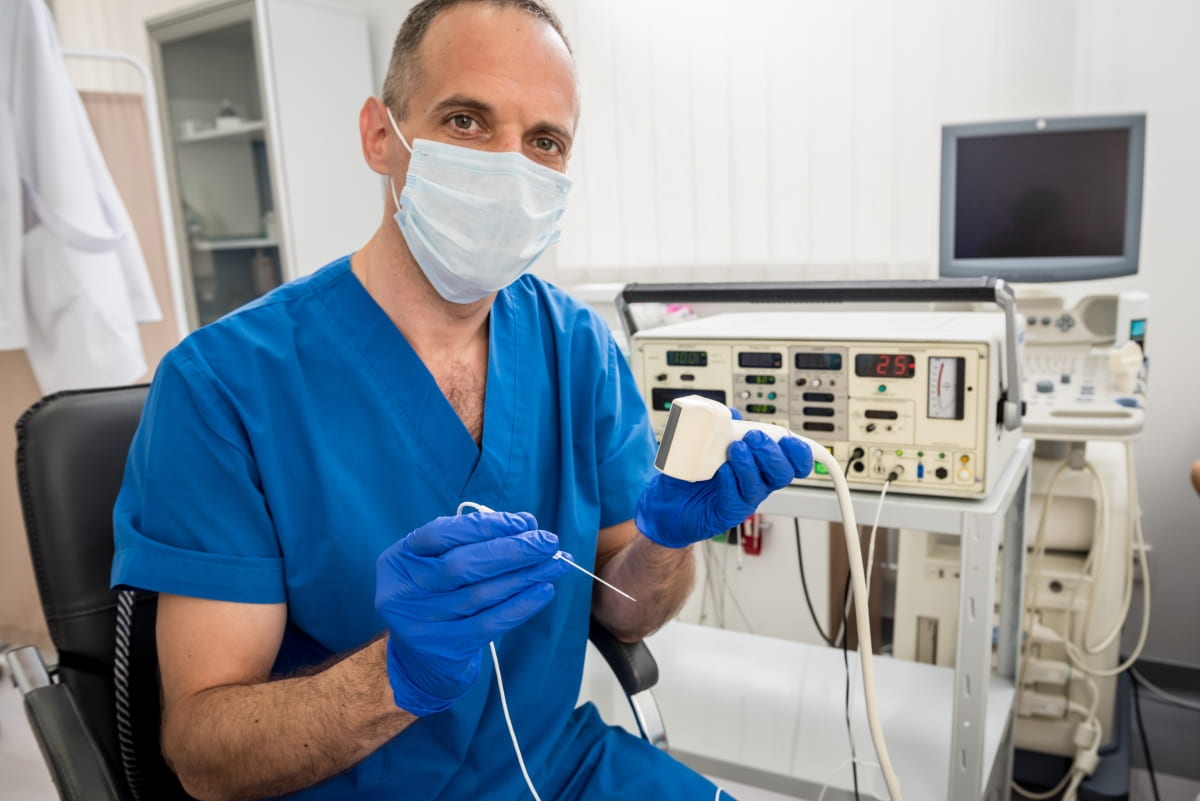An interventional cardiologist is a cardiologist who has one to two years of additional education and training in diagnosing and treating cardiovascular diseases as well as congenital (congenital) and catheter-based procedures for structural heart conditions, such as angioplasty and stenting.
What kinds of procedures do interventional cardiologists do?
Cardiac catheterization
This test assesses the presence, size, and location of plaque deposits in the arteries, the strength of the heart muscle, and the function of the heart valves. During cardiac catheterization, the catheter is inserted into a blood vessel in the leg or wrist and gently guided into the heart. Contrast dye is injected into the coronary arteries so the cardiologist can detect the movement of blood through the arteries and chambers of the heart.
Percutaneous coronary intervention (PCI)
The goal of PGI, also known as angioplasty, is to open the coronary artery to restore blood flow. PCI is a procedure scheduled for the emergency treatment of a heart attack patient or for adequate blood flow to the heart. The cardiologist selects the most suitable tool to repair the cardiac vessels based on the specific anatomy of the patient.
Balloon angioplasty
Balloon angioplasty improves blood flow to the heart. The balloon-tipped catheter is guided into the blocked artery. The balloon inflates the blocked area and opens the arterial walls.
Atherectomy
This procedure uses a special spray device to open hardened blockages in the coronary arteries. Atherectomy is often performed during balloon angioplasty. In many cases, a stent is then inserted into the blockage.
Stent implantation
After balloon angioplasty or atherectomy, a small metal coil or mesh tube called a stent may be placed in the artery. The stent is placed at the end of a catheter, inserted through a blood vessel in the leg or wrist, and guided to the heart, where the newly opened arteries do not collapse.
What is the difference between an interventional cardiologist and a cardiologist?
Cardiologists
Cardiologists must complete a residency in internal medicine after obtaining a medical degree. After residency, it will take two years to complete a fellowship in cardiology. The standard role of cardiologists is to act as non-invasive cardiologists and recommend lifestyle changes, such as performing diagnostic tests and treating patients by prescribing medication or improving their condition. Those who train to become invasive, non-interventional cardiologists can do similar work with patients but are also eligible to undergo medical tests for arterial blockages. However, non-interventional invasive cardiologists do not perform the procedures performed by interventional cardiologists.
Job responsibilities of a cardiologist:
- Evaluation of the cardiovascular and cardiac health of patients
- Explain the results of ECGs and other tests.
- Refer patients to other specialists
- Cardiac catheterizations (invasive, interventional non-cardiologists only)
Interventional cardiologist
Interventional cardiologists spend three years completing a fellowship in Interventional Cardiology after graduating from medical school, completing a residency in Internal Medicine, and completing a fellowship in Cardiology. Interventional cardiologists often work in hospitals and can work at any time of the day or night on weekends or weekends. They can treat patients with conditions like heart disease or clogged arteries. Interventional cardiologists need to have good communication and leadership skills so that they can work effectively when performing procedures with other medical professionals. They also benefit from being physically fit and capable because they can stand longer and the procedures often require precision.
Job responsibilities of an interventional cardiologist:
- Check referrals
- Explain procedures to patients.
- Perform procedures such as inserting stents into arteries and repairing valves
- Follow up with patients after treatment.
Is Interventional Cardiology invasive?
Interventional cardiology often appears invasive but does not require surgery. A small flexible tube called a catheter is inserted into the body to repair damaged or weakened blood vessels, narrow arteries, or other parts of the structure.
Benefits of Interventional Cardiology
Increase comfort, reduce problems
Before the advent of transradial cardiac catheterizations and interventions, catheterizations were inserted through the groin to access the arterial system, causing many problems for patients. This treatment, which is still practiced by doctors who are not certified to use interventional cardiology, generates a high level of discomfort in patients.
This often increases recovery time as patients struggle with the painful consequences of the procedure. Also, due to the nature of the treatment, patients often experience bleeding, bruising, and pseudoanuria at the surgical site along the femoral artery.
Problems associated with common catheterizations, such as retroperitoneal hemorrhage, have also been shown to be fatal in some patients. Fortunately, this is not the case in interventional cardiology.
Find the best Interventional Cardiologists in Kolkata Book doctor appointment online with top Interventional Cardiologists, view consultation fees, reviews, Op timings, hospital address Skedoc

